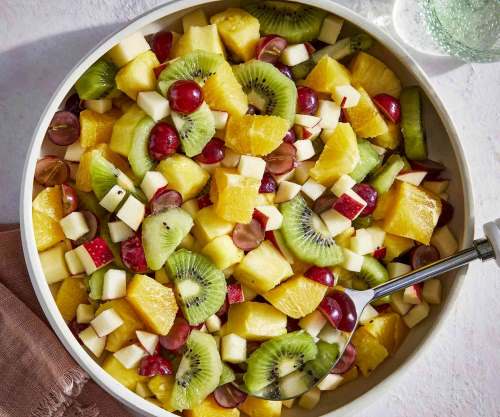Know types of fruits to mix in salad; Read to know more

Know types of fruits to mix in salad; Read to know more
While fruit salads may appear to be a nutritious option, it’s important to note that combining all of your preferred fruits may not be the best approach for your health. Experts explain that just as we acknowledge the distinct functions of proteins, carbohydrates, and vegetables in our diet, each fruit provides distinct advantages. Protein is essential for building muscle and fortifying bones, skin, and hair follicles.
Carbohydrates are responsible for releasing glucose and providing energy within the body. Vegetables contain essential micronutrients and minerals that are necessary for the body, along with fiber that aids in digestion. Likewise, various fruits contribute to our overall well-being and offer unique benefits to our bodies.
Can a fruit salad be considered a healthy option? Absolutely!
The key to a truly healthy fruit salad lies in the combination of fruits. By thoughtfully selecting and combining fruits, you can maximize the nutritional benefits of each one. Take into account the different textures, flavors, and properties of each fruit to create a well-rounded and nourishing medley. A properly crafted fruit salad can aid in digestion, hydration, and overall health. Just remember to avoid mixing different fruits in the same salad.
Sour fruits such as orange, tangerines, and lemons have cleansing properties that make them ideal for fruit salads. The citric acid and sourness in these fruits act as gentle cleansers, helping to eliminate unwanted fat and grease from our bodies. This is why many people choose to drink lemon with hot water in the morning, as it helps to cleanse the system.
Here are some fruits that are known for their sour taste: – Lemon – Lime – Orange – Tangerine – Grapefruit – Kiwi – Cranberries – Sour Cherry – Green Apple – Pineapple
Astringent fruits, such as apples, cherries, strawberries, and blueberries, possess their own distinct appeal. These fruits have astringent properties that aid in drying the mouth, reducing water retention in the body, and assisting in the tightening of tissues and collagen. It is recommended to combine astringent fruits with other fruits.
Examples of fruits with astringent properties include
Apple, Pomegranate, Persimmon, Cranberries, Guava, Blackberry , Raspberry, Quince, Passion Fruit, Gooseberry
On the other hand, there are sweet fruits such as mangoes, bananas, and avocados. These fruits not only offer a delightful taste but also contribute significantly to the growth of new tissues and provide essential healthy fats.
Here are some sweet fruits that are commonly consumed: – Mango – Banana – Grapes – Watermelon – Papaya – Peach – Plum – Strawberry – Avocado – Figs
To maximize the nutritional benefits of fruits, it’s recommended to consume sour, astringent, and sweet fruits separately. However, if this seems too complicated, a straightforward solution is to eat one type of fruit at a time. This approach enables your body to absorb the unique nutrients of each fruit without disrupting its delicate equilibrium.










